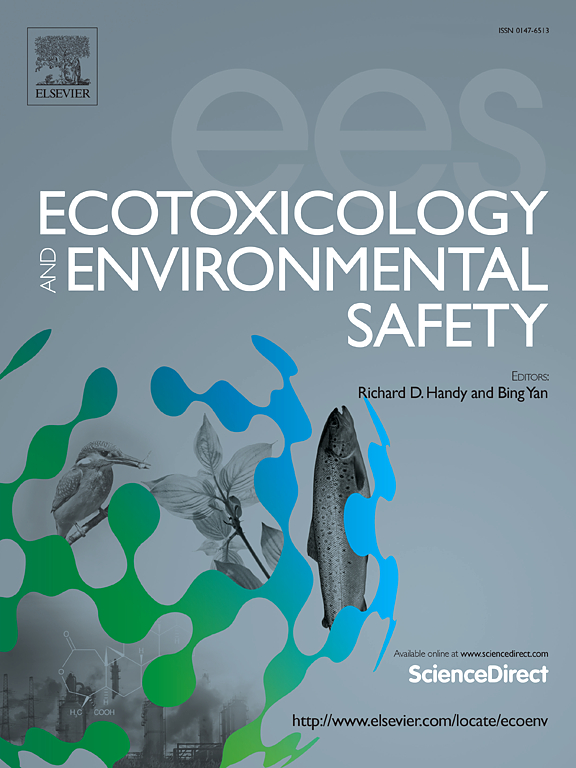基于蒙特卡罗模拟的受工业活动影响岩溶地下水系统微量元素污染及人体健康风险评价
IF 6.1
2区 环境科学与生态学
Q1 ENVIRONMENTAL SCIENCES
引用次数: 0
摘要
喀斯特地区地下水是重要的饮用水源,但极易受到工业活动的污染,从而加剧了污染并构成健康风险。研究了喀斯特景观代表性城市贵阳某新建工业园区地下水中微量元素(TEs)的浓度、空间分布、质量、健康风险及来源。结果表明,微量元素浓度后顺序:Ti > 铁> Al > 倪> Cr > Mn > V > 铜> 作为> 有限公司相关分析(CA)和层次聚类分析(HCA)表明,TEs的来源是多方面的,工业活动是主要的影响因素。蒙特卡罗模拟显示,与每种元素相关的非致癌风险(NCR)可以忽略不计。然而,由于工业活动,铬、镍和砷显示出显著的致癌风险。铬作为电镀工业的特征性污染物之一,具有最高的潜在危险性。成人和儿童的总致癌风险(TCR)分别为3.24E-05和3.78E-05,均超过1E-06的可接受风险阈值。这些结果对喀斯特工业区脆弱含水层的管理作出了有意义的贡献,重点是防止TEs污染,这对确保地下水安全和保护公众健康至关重要。本文章由计算机程序翻译,如有差异,请以英文原文为准。
Assessment of trace elements contamination and human health risk based on Monte Carlo simulation in a karst groundwater system affected by industrial activities
Groundwater in karst regions is a vital drinking water source, but it is highly susceptible to contamination from industrial activities, which exacerbate pollution and pose health risks. This study investigated the concentration, spatial distribution, quality, health risks and sources of trace elements (TEs) in groundwater within a newly established industrial park in Guiyang, a representative city with a karst landscape. The results indicated that the trace element concentrations followed the order: Ti > Fe > Al > Ni > Cr > Mn > V > Cu > As > Co. Correlation Analysis (CA) and Hierarchical Cluster Analysis (HCA) suggested that the sources of TEs are multifaceted, with industrial activities identified as the primary influencing factor. Monte Carlo simulations revealed that the non-carcinogenic risk (NCR) associated with each element was negligible. However, due to industrial activities, Cr, Ni and As exhibited significant carcinogenic risks. As one of the characteristic pollutants of the electroplating industry, Cr presented the highest potential risk. The total carcinogenic risks (TCR) for adults and children were 3.24E-05 and 3.78E-05, respectively, both exceeding the acceptable risk threshold of 1E-06. These results make a meaningful contribution to the management of vulnerable aquifers in karst industrial areas, with an emphasis on protection against TEs contamination, which is critical for ensuring groundwater safeguard and protecting public health.
求助全文
通过发布文献求助,成功后即可免费获取论文全文。
去求助
来源期刊
CiteScore
12.10
自引率
5.90%
发文量
1234
审稿时长
88 days
期刊介绍:
Ecotoxicology and Environmental Safety is a multi-disciplinary journal that focuses on understanding the exposure and effects of environmental contamination on organisms including human health. The scope of the journal covers three main themes. The topics within these themes, indicated below, include (but are not limited to) the following: Ecotoxicology、Environmental Chemistry、Environmental Safety etc.

 求助内容:
求助内容: 应助结果提醒方式:
应助结果提醒方式:


